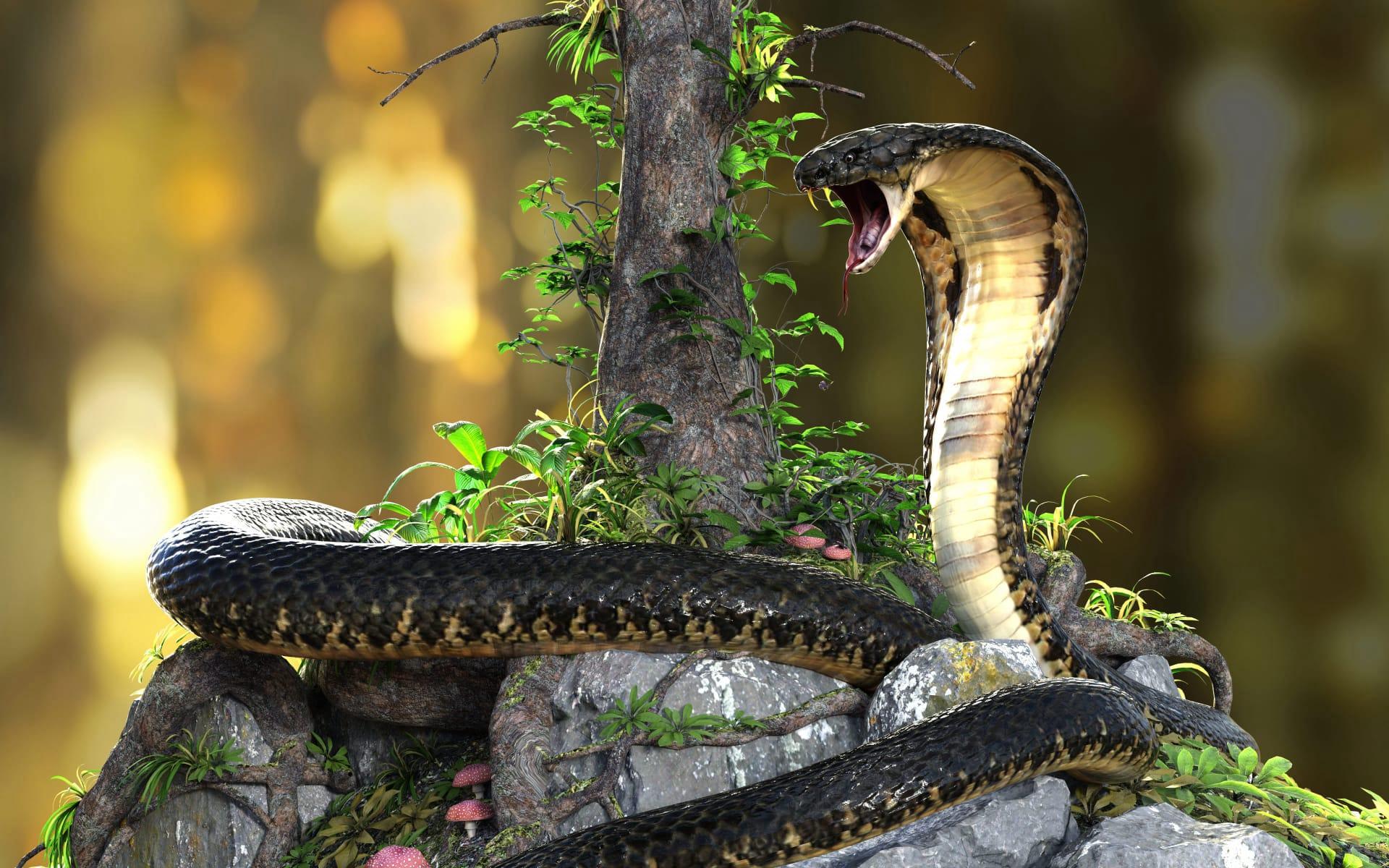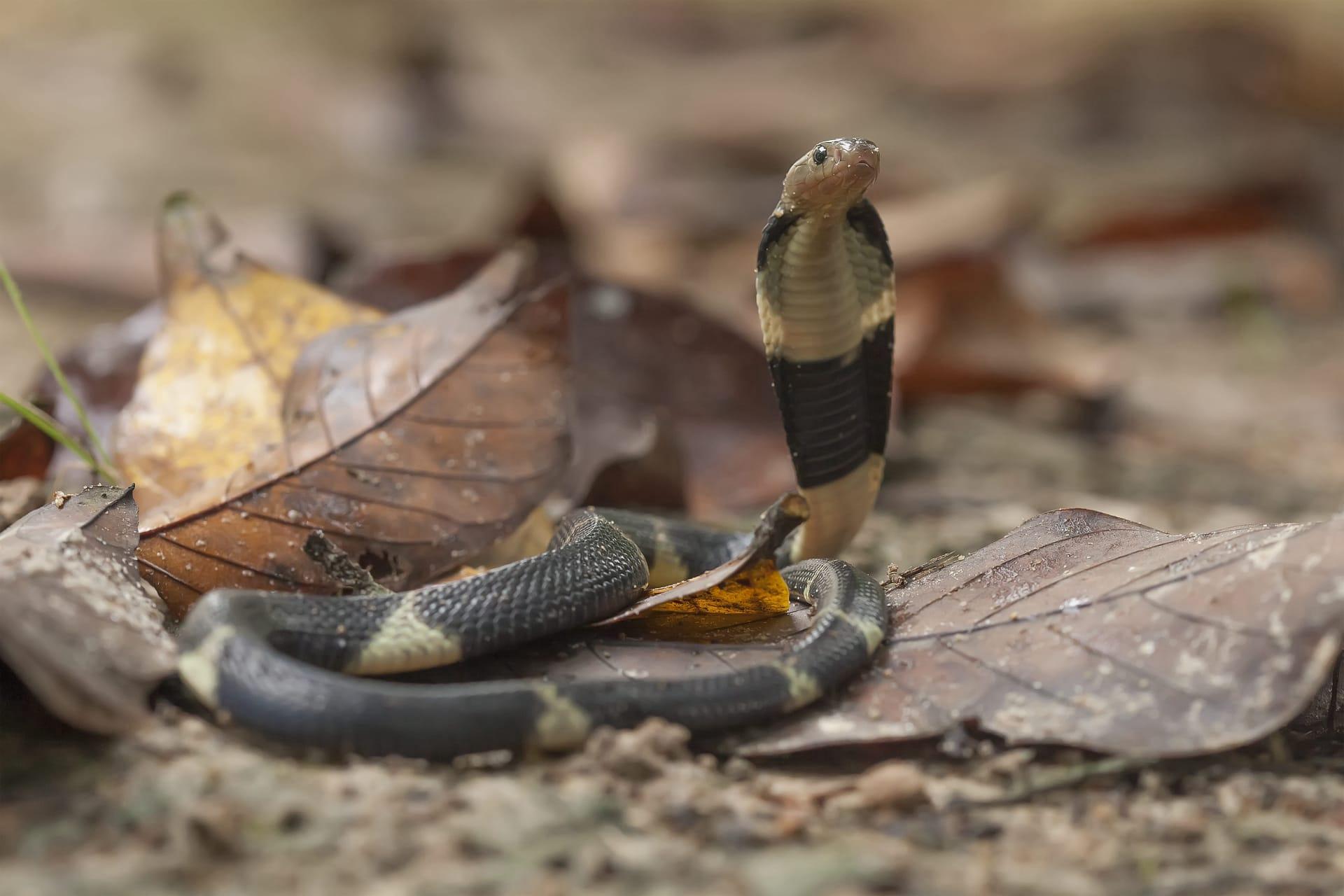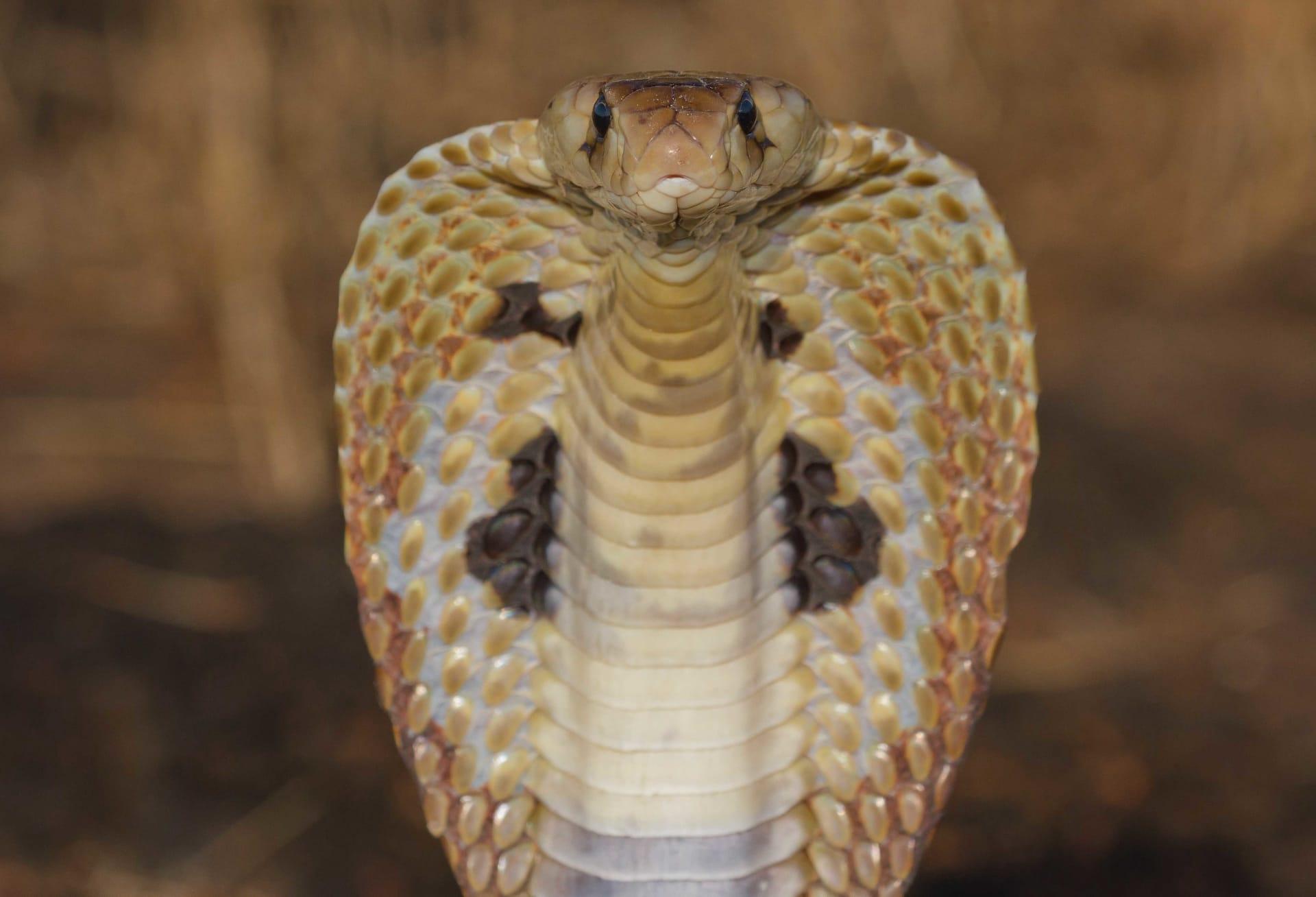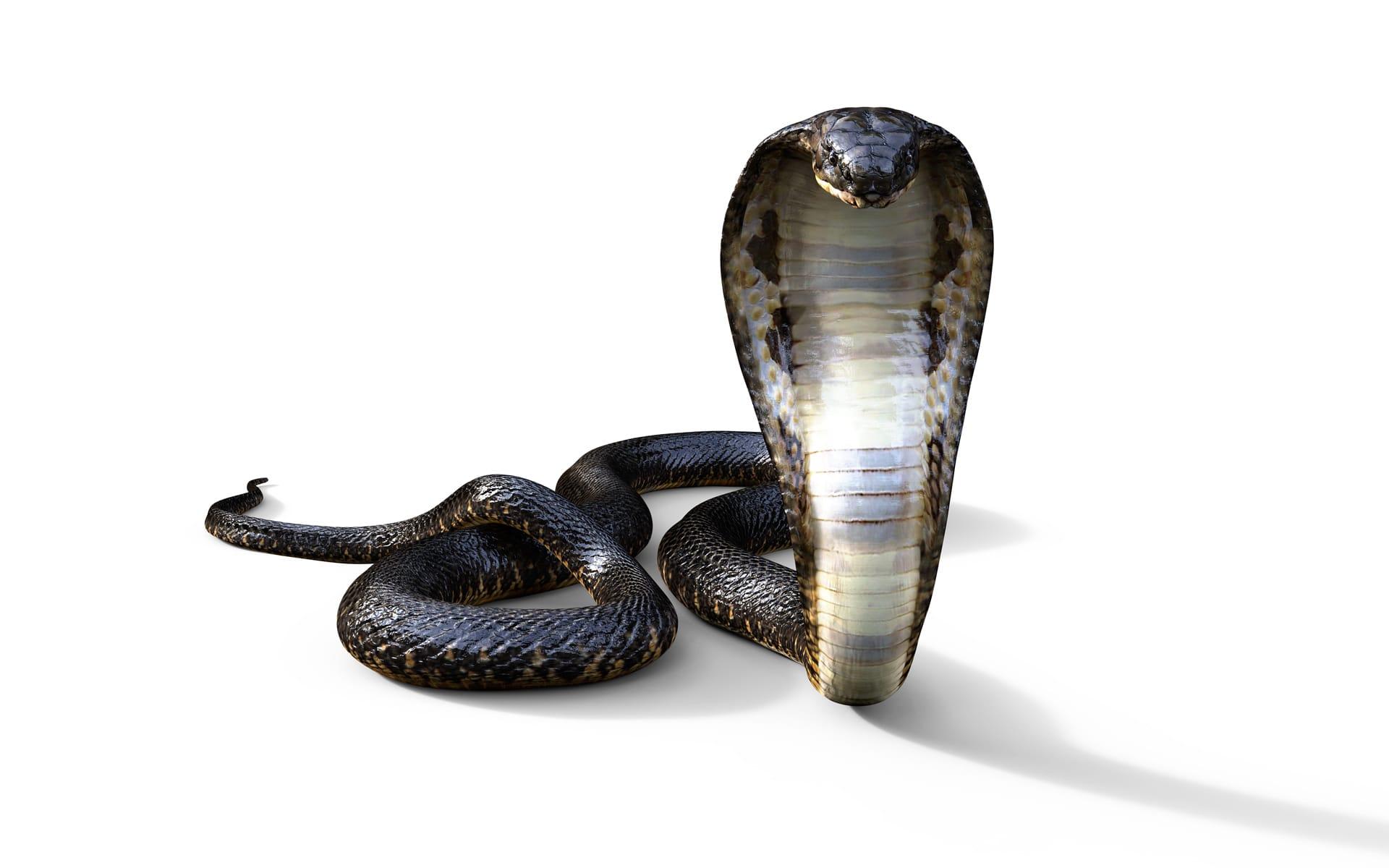King Cobra Characteristics
- Home /
- Mini Encyclopedia /
- Animal /
- King Cobra Characteristics
1
The King Cobra, a fascinating and formidable creature, boasts a striking set of physical attributes. Among snakes, it stands out for its considerable size, with adults typically reaching lengths of 10 to 13 feet, though some can grow up to 18 feet. This makes the King Cobra the longest venomous snake in the world. In terms of lifespan, these snakes can live up to 20 years in the wild, a testament to their resilience and adaptability. What's particularly intriguing is their skin, a sleek canvas displaying a mix of olive, brown, and black hues, often adorned with pale yellow bands, which provides excellent camouflage in their natural habitats.
Arguably the most distinctive organ of the King Cobra is its venom glands, which are extraordinarily developed compared to other snakes. These glands produce a potent neurotoxic venom, a complex cocktail of proteins and enzymes. This venom is not only lethal but also delivered in large quantities, up to 7 milliliters per bite. The venom’s primary function is for defense and hunting, capable of immobilizing prey, such as other snakes, almost instantly. The efficiency and potency of this venom reflect the King Cobra’s position as a top predator in its ecosystem.

2
Question: What makes the King Cobra’s hood unique among snakes?
Answer: The King Cobra's hood, a remarkable feature, sets it apart from other snakes. When threatened, the King Cobra can extend its neck ribs to flare out its hood, an intimidating display meant to deter predators and rivals. The hood, which is essentially an extension of the throat, is adorned with a distinctive 'V' or 'U' shaped pattern, enhancing its threatening appearance. The ability to expand the hood is unique to cobras, and the King Cobra's hood is notably larger and more pronounced than those of other cobra species, making it a truly distinctive characteristic of this majestic snake.

3
The locomotion of the King Cobra is as intriguing as it is efficient. It primarily moves using lateral undulation, where the body bends into a series of S-shaped curves. This method is typical for snakes, allowing them to navigate through various terrains with ease. King Cobras can move swiftly, reaching speeds of up to 12 kilometers per hour, which is fast for a snake. They are also proficient climbers and swimmers, making them versatile predators capable of traversing diverse environments.
When it comes to hunting, King Cobras exhibit remarkable traits. They primarily feed on other snakes, including venomous species like kraits and even other cobras. This diet choice has earned them the title of 'ophiophagus,' meaning snake-eater. Their exceptional sense of smell and keen eyesight enable them to track down their prey effectively. Once they locate a target, King Cobras strike quickly, injecting their potent venom. They then wait for the venom to immobilize the prey before consuming it whole, an impressive feat considering the size of their meals.

4
King Cobras dwell in a variety of habitats, ranging from dense highland forests to open clearings. They are predominantly found in South and Southeast Asia, including India, China, Indonesia, and the Philippines. These snakes prefer environments with access to water sources like streams and ponds. They thrive in both tropical and subtropical climates, demonstrating a remarkable adaptability to different ecological conditions. This adaptability is key to their survival, as they need to navigate various terrains while hunting and avoiding threats.
The reproduction of King Cobras is unique among snakes. They are the only snakes that build nests for their eggs, a task carried out by the female. Constructed from leaves and other vegetation, these nests can be up to 55 centimeters high and 140 centimeters in diameter. The female lays 20 to 40 eggs and then guards them fiercely until they hatch, which takes about 60 to 90 days. The hatchlings are about 45 to 55 centimeters long and are born with fully functional venom glands, ready to fend for themselves from birth.

5
Book: "The King Cobra: Natural History and Captive Management" by Tom Charlton (United Kingdom, 2001). This comprehensive guide delves into the biology, behavior, and conservation of the King Cobra. Charlton, a renowned herpetologist, combines scientific research with practical insights, making it an invaluable resource for both enthusiasts and professionals. The book covers various aspects, from the snake's venom composition to its role in ecosystem balance, offering readers a deep understanding of this magnificent reptile.
Book: "Serpents in the Clouds: The Life of the King Cobra" by M. D. Madhusudan (India, 2010). This narrative-driven book explores the world of the King Cobra through a blend of folklore, research, and personal encounters. Madhusudan, a wildlife biologist, brings to life the cultural significance of the King Cobra in Indian society. The book intertwines scientific facts with cultural perspectives, providing a holistic view of the snake's influence on both ecology and human imagination.